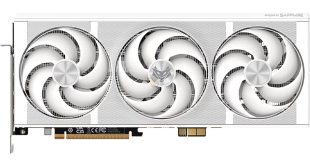The tests were performed in a controlled air conditioned room with temperatures maintained at a constant 25c – a comfortable environment for the majority of people reading this.
Idle temperatures were measured after sitting at the desktop for 30 minutes. Load measurements were acquired by playing Crysis Warhead for 30 minutes and measuring the peak temperature. We also have included Furmark results, recording maximum temperatures throughout a 30 minute stress test. All fan settings were left on automatic.
Furmark is an intensive stress test which shows a very ‘worst case' scenario. It isn't that indicative of a real world situation, which is why we also include gaming tests. When gaming, the card never rose above 78c, with a fan speed of around 60percent. Under Furmark, the temperatures rose to 84c and the fan increased to 72percent.
Return to Idle is a feature we have recently added to our reviews … we measure the time it takes for a solution to return to idle temperatures, immediately after full load. The faster the time, the better the cooler – for example a Noctua NH D14 cooler will return an Intel processor to idle temperatures much faster than a reference cooler. This is a good indication of how quickly a heatsink can dissipate heat.
With a single slot cooler, there is always going to be a performance trade off. In this case it takes over 30 seconds for the card to return the temperature to idle, even with a fairly aggressive fan profile. To be fair, this is actually quite good, as some of AMD's reference cooling configurations will take longer than this.
 KitGuru KitGuru.net – Tech News | Hardware News | Hardware Reviews | IOS | Mobile | Gaming | Graphics Cards
KitGuru KitGuru.net – Tech News | Hardware News | Hardware Reviews | IOS | Mobile | Gaming | Graphics Cards




Looks great. I like the fact many media system will suit this, and its more powerful than the usual single slot option
Nice looking card, very slim 😉
The noise figures are helpful, but I want to get two for a new crossfire based media center in a HTPC lian li chassis. will the noise be offputting? its hard to know.
Its a neat idea for a fairly high powered card, but in reality most people shouldnt touch it. they are better off with a dual slot design as they always run cooler and produce less noise. shame they didnt opt for a bigger fan which would spin slower.
Not for me, 6950 is in my plans for the future.
I opted for a 5670 passive card for my media system, it was enough for what I needed. this is a good option, but most people will want a silent or very quiet card for media. this isn’t it. good review